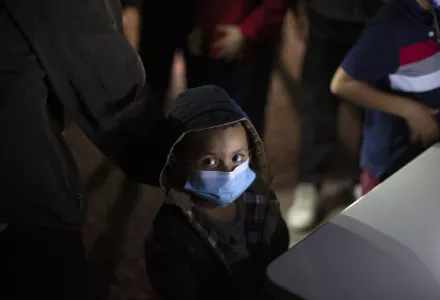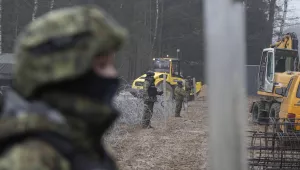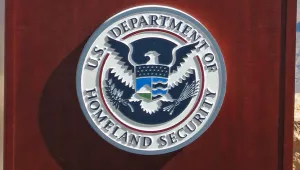
The movement of migrant children to the United States’ southern border is now a recurring and record-producing characteristic of migration in the Western Hemisphere. When they enter the United States, children navigate a complex, uncoordinated, and broken bureaucracy of U.S. government immigration actors.
Children are first met by law enforcement officials who lack the training and skills to properly screen and interview the child in a trauma-informed and developmentally appropriate manner. Children then wait days or longer to move from jail-like holding facilities to shelters operated by licensed childcare providers. During their initial triage, law enforcement personnel ask questions regarding the child’s basic background, to include name, age, and country of origin; but they also ask if they fear returning to their country, if they have been a victim of abuse, and family composition (i.e. did they arrive as a family, with siblings, or alone). The children then undergo a basic medical screening, where information on their COVID status, health, and well-being is collected. All of these are appropriate areas of inquiry, but the process of information relay is broken. Shelters that receive the children after their border processing report the information given to them is often wrong, lost, or incomplete.
This complex set of problems is more than another ineffective border security issue; this is a systemic failure by four successive presidential administrations that have had the authority to address these issues but have lacked the will to act. The consequence of this inaction has been to place migrant children at risk. Policymakers need to act now and place child welfare professionals, not law enforcement actors, at the border to effectively screen and interview migrant children. Information sharing practices need to be improved, with a movement away from paper documents that can easily get lost to an approach that is digital, secure, and accessible by the child, their guardian, their lawyer, and their doctor. Further, the enforcement processing facilities need to undergo an immediate infrastructural transformation with the addition of new design features that are necessary and sensitive to the majority demographic that are held within facilities—children and families.
These actions are doable and require no legislative action. Migrant children deserve decisive action to ensure that their health, safety, and well-being is not jeopardized as they seek refuge in the United States.
Lorenzen-Strait, Andrew R.. “Improving Migrant Child Welfare at the Southwest Border.” Belfer Center for Science and International Affairs, Harvard Kennedy School, February 2023



